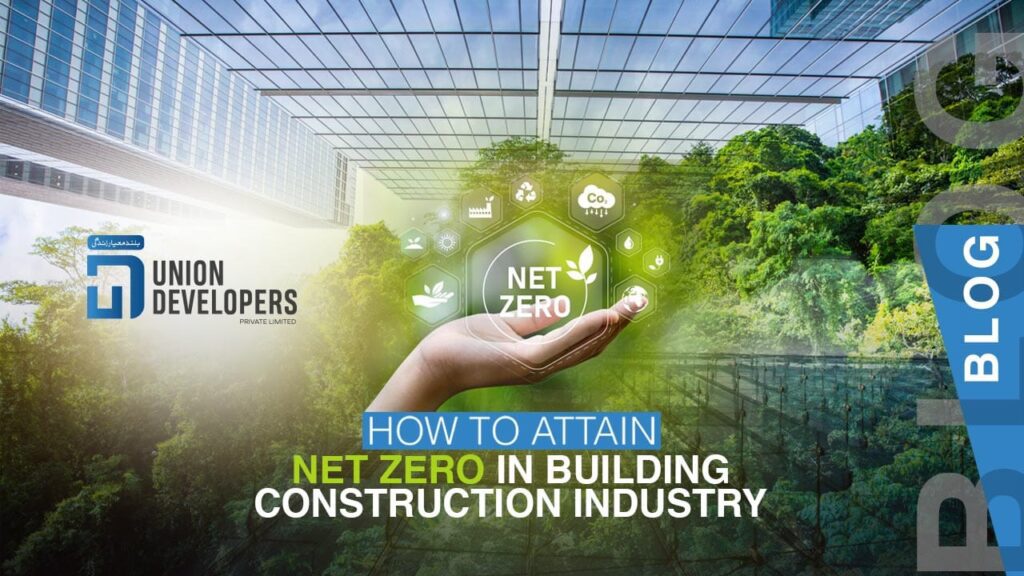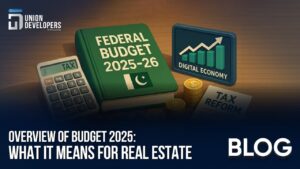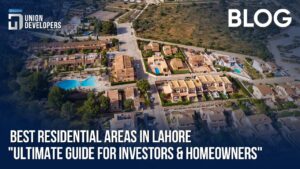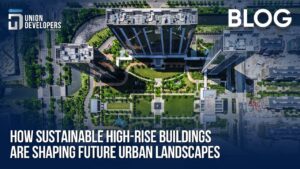Practical Design Solutions in Pakistan can Impact Future Generations through Sustainable & Resilient Structures
The clock is ticking, with every passing moment we are drifting away from life, inhaling clean air is beyond reach, lands are getting barren and famine leads to fatalities. Lahore is the most polluted city of the world, according to WHO. Unfortunately, from past ten years Pakistan is among the first top ten countries of the world who is affected by global warming. In an era of increasing environmental awareness, the notion of achieving ‘net zero’ has gained immense significance on global scale. As per the terms set forth in the Paris
Agreement, it is imperative that we undertake a concerted effort to curtail emissions. A substantial reduction of 45% must be achieved by the year 2030, with the ultimate goal of attaining a state of equilibrium wherein emissions are effectively offset, referred to as net zero, by the year 2050. As climate change continues to pose a significant threat to our planet, the real estate industry is recognizing its responsibility in reducing carbon emissions and adopting sustainable practices. Let’s get the deeper understanding of global significance of achieving ‘net zero’ in real estate sector and insights into where Pakistan’s real estate market stands in this endeavour.
What is ‘Net Zero’ in Real Estate?
‘Net zero’ in real estate refers to the practice of minimizing the carbon footprint of buildings and properties to the point where the carbon emissions produced are balanced or offset by equivalent carbon reductions elsewhere. This involves a combination of energy-efficient design, renewable energy generation and carbon offset strategies which will be resulting in a neutral or zero carbon footprint.
Global Significance of Achieving ‘Net Zero’ in Real Estate
It’s important to note that achieving ‘net zero’ in real estate requires a holistic approach involving the collaboration of architects, engineers, builders, government bodies and occupants. Continuous monitoring, evaluation and improvement are essential to maintain and enhance the sustainability of the property.
Combating Climate Change: The real estate sector significantly contributes to greenhouse gases and carbon emissions as a result of the energy usage in structures. Attaining a ‘net zero’ state aids in combating climate change by diminishing these emissions.
Economic Benefits: Energy-efficient buildings often lead to reduced operational costs, making them financially attractive to both investors and residents.
Regulatory Compliance: Many countries are endorsing regulations and incentives to promote ‘net zero’ constructions and compliance with these standards is becoming increasingly important.
Improved Health and Well-being: Sustainable architectural designs harbour the potential to augment indoor air quality, thereby fostering a heightened degree of comfort among occupants, consequently advancing their health and overall well-being.
Energy-Efficient Designs: Start by designing and constructing buildings that are highly energy-efficient. Focus on insulation, airtightness and high-performance windows to minimize energy losses.
Clean Energy Generation: Install on-site renewable energy systems such as solar panels, wind turbines or geothermal heat pumps to generate clean energy. These systems should be sized to produce enough energy to meet the building’s demand.
Energy Saving Practices: Reduce energy consumption within the building by using energy-efficient appliances, LED lighting and smart energy management systems. Encourage consumers to be mindful of their energy usage and provide education on energy-saving practices.
Natural Design Approaches: Incorporating passive design strategies that leverage natural heating, cooling and lighting techniques is a fundamental aspect of sustainable architecture. This entails harnessing the benefits of abundant natural light, deploying effective shading devices and precisely orienting the building to harness optimal solar gain. These measures not only enhance energy efficiency but also contribute to a more environmentally responsible and economically viable construction approach.
Energy Monitoring for Efficiency Enhancement: Boosting energy efficiency is a vital goal for modern businesses and achieving it begins with the adoption of advanced energy monitoring systems. These systems offer a precise view of energy consumption and areas ripe for improvement. By binding this data, organizations can optimize energy usage and identify opportunities for further efficiency measures.
Electrification & Energization: Facilitating the shift from fossil fuel-dependent systems to electric-powered alternatives encompasses the substitution of gas-powered heating systems with electric heat pumps, the adoption of electric water heaters and the integration of induction cooktops.
Green Building Materials: Use sustainable and eco-friendly building materials that have a lower carbon footprint. Featuring recycled components materials with low embodied energy and sourced from responsible suppliers.
Water conservation: Implement water-saving strategies like low-flow fixtures, rainwater harvesting systems and efficient irrigation techniques. Minimize water consumption to reduce the overall environmental impact.
Offsetting emissions: In some cases, it may be challenging to achieve complete ‘net zero’ due to limitations or constraints. In such situations, consider offsetting the remaining emissions by investing in carbon offset projects or purchasing renewable energy credits.
Pakistan’s Progress Toward ‘Net Zero’ in Real Estate
Pakistan’s real estate sector has witnessed substantial progress in recent times, but the attainment of ‘net zero’ status continues to present a formidable challenge, primarily due to a myriad of prevailing factors.
Infrastructure Challenges: Inadequate infrastructure and utilities, such as inconsistent electricity supply, hinder the widespread adoption of renewable energy sources like solar panels.
Lack of Awareness: Awareness about sustainable building practices and their long-term benefits is still limited among builders, developers and homebuyers.
Economic Constraints: The initial costs associated with energy-efficient technologies and sustainable building materials can be higher which deterring developers.
Policy and Regulation: Pakistan is currently engaged in the formulation and implementation of regulatory frameworks aimed at fostering ‘net zero’ construction practices, but these efforts are still in the early stages of development.
Steps Towards Achieving ‘Net Zero’ in Pakistan
Education and Awareness: Promoting awareness about the benefits of sustainable construction practices is crucial to encouraging their adoption in the real estate sector.
Incentives and Subsidies: Government incentives, subsidies and tax breaks for renewable energy installations can make it more financially viable for developers.
Collaboration: Collaboration between the government, real estate industry and environmental organizations can help formulate and implement effective policies and strategies.
Conclusion
Achieving ‘net zero’ in real estate is a global necessity that can significantly contribute to combating climate change and improving the sustainability of our built environment. While Pakistan’s real estate industry faces challenges on the path to ‘net zero,’ it is important to recognize the progress made and the potential for growth through education, incentives, awareness and collaboration. By embracing sustainable practices, Pakistan could stand among the frontline states in environmentally responsible real estate development and contribute to a greener future for all.









